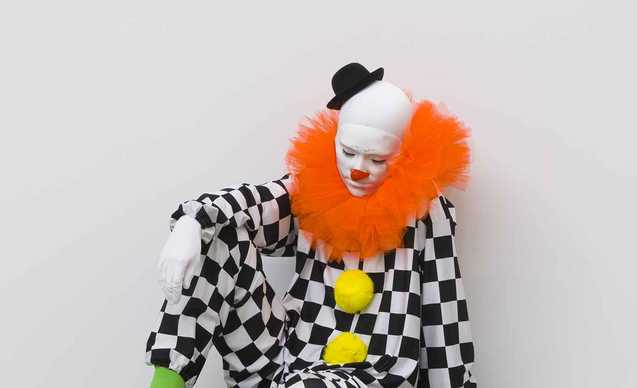Ugo Rondinone
Ugo Rondinone Giorni d’oro + notti d’argento Macro Testaccio e Mercati di Traiano Roma
Within the steel construction of Macro Testaccio and the brick arches of Trajan’s Markets, Ugo Rondinone imagined his installation Golden Days + Silver Nights, an exhibition conceived as a path suspended between dream and reality, which unfolds over the course of 24 hours in the heart of Rome, from the Imperial Fora to the popular neighborhood of Testaccio. Two large environmental installations transform the spaces into fantastical places, physical and conceptual experiences, putting into opposition the strong and explosive polichromy of Macro Testaccio and the absolute white of Trajan’s Markets. Golden Days gathers several of the artist’s works at Macro Testaccio, which is transformed into a dazzling space, dominated by light and color and animated by the large installation Vocabulary of Solitude. The work is presented in Italy for the first time after its highly acclaimed installation in the Museum Boijmans in Rotterdam; it will later travel to the Bass Museum in Miami in December for Art Basel.
The work consists of 45 clowns that represent, through different postures, the moments of a person’s everyday life, denouncing the despair of human solitude. Dressed in clothes of different colors, the clowns get their names from the verbs of human activity: to think, to be, to remember, to lie, and so on. Faces with eyes hidden behind white masks, like melancholic and joyous metaphores of individuals who live in a world dominated by artifice, mute and silent protagonists of a stage enlivened by sparks of light and color in hundreds of drawings of rainbows created for Rondinone by the young students of Roman schools.
This is not a gathering of works, but a single installation, where the obsession with repetition, a feature of the artist’s work, becomes a universe of suggestions, made more intense and poetic, almost psychedelic, by an architectural space where every wall is transformed into a sculptural element, in perfect symbiosis with the work of art.
Rondinone commented in 2014 that “Since 2007 my exhibitions have highlighted the natural colors of the work’s materials: stone, gesso, clay, bronze or alluminum. Now is the time to bring in the whole chromatic spectrum,” His Golden Days are a hymn to happiness, to optimism, to the joy of life, but also an invitation to reflect, almost a mirror onto the current human condition.
The explosion of colors around an individual’s everyday life is in contrast to Silver Nights, an installation in the impressive and grand exedra of Trajan’s Markets of five casts of thousand-year-old olive trees, still present in Puglia and Basilicata, realized in white aluminum. The artist’s idea, which is triggered by the memory of the family’s homeland – they emigrated from Switzerland to Matera – is to link the monument to an ancestral time, a sort of petrified prehistoric forest. Space and work of art are united by the same original temporal dimension: the olive trees were planted in the same years that the architect Apollodorus from Damascus built the Markets for the Emperor Trajan, around 100-110 a.d. A flora at the same time fossil and contemporary, dramatic and expressive – almost epic – suspended between nature and artifice, both historical and prehistorical. The whiteness of the trees, pearly under the setting sun, suggests the phases of the full moon, from which they take their name. Within the ruins of the most important commercial and multi-functional center of imperial Rome, Rondinone’s trees are silhouetted like a fantastical and surreal vision, underlining art’s capacity to amaze and awe the spectator through a strong connection between architecture and nature.
Ludovico Pratesi
